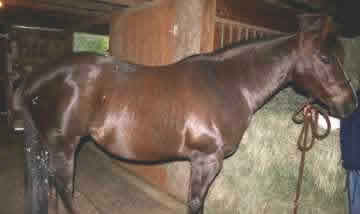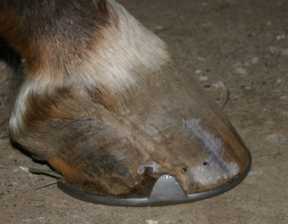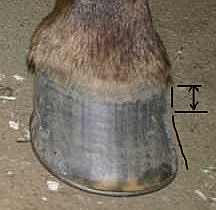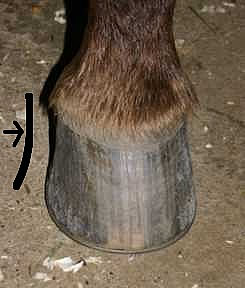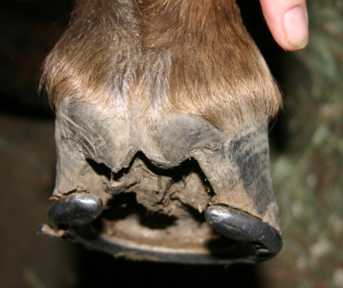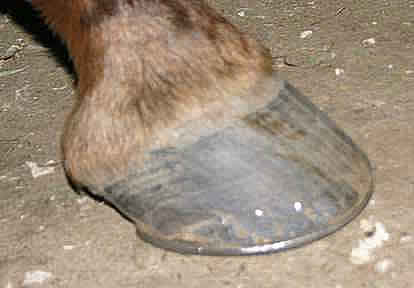 |
HealthyHoof.comHoofcare & Information for Barefoot SoundnessLinda Cowles Hoof Care - Serving the greater SF Bay Area and Northern California |
Nipper
|
|
Flair Flair Everywhere!!This horse has LOTS of flare! Her walls are waaayyy too long, so there is forward flare that set the heel buttress at least 3/4 inch in front of where they should be. The picture below left shows the "first good inch" of wall below the coronet band - the top of the wall that is still tightly connected to the coffin bone and thus represents what the angle of the hoof should be, and below it, the dramatic outward flare of the wall. From the rear, the picture below right shows a "waist" where the wall has sagged inward under pressure, while the frog is suspended high above the ground. |
|
|
|
I traced a few growth rings on the front feet below left - something I'm notorious for doing - but didn't take the time to trace the backs which are on the right. These growth rings show lots of upward flare in the quarters. Notice how the coronet band rises up on the inside of the front right? We have pictures of this foot 10 days later showing how the flare has dropped on March 24, 2006 - Dropped Flare & De contraction The feet above have already started relaxing, and the nail holes are just visible in the bevel at the quarters. |
|
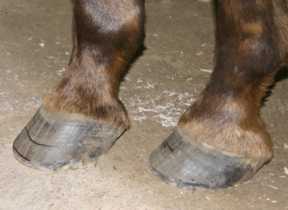 |
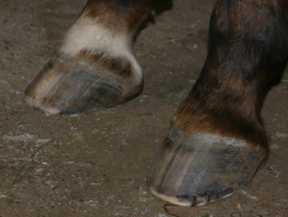 |
Contracted HeelsThis mares heels are tightly contracted in the pictures below, and her poor frogs are withered and lifeless looking. I didn't know it at the time, but Nipper had lived with a bad case of thrush for several years. Her Digital Cushion, located in the hollow area above her heel bulbs, is a shock absorbing area that should have the consistency of a tennis ball... hers felt as weak as her frogs look. According to http://www.equipodiatry.com/glossary.html , the digital cushion is "Modified subcutaneous tissue composed of fat, connective and elastic tissue. The digital cushion is the sum of the cuneate (frog) and toric (bulbar) cushions. ". What we need to know is that when it's really healthy (as in mustangs and unshod well exercised horses), it has a robust size and dense texture. |
|
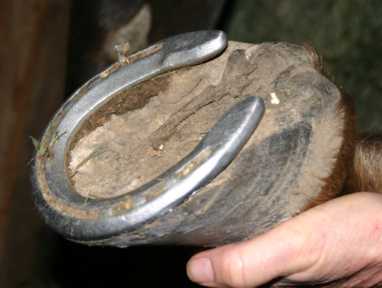 |
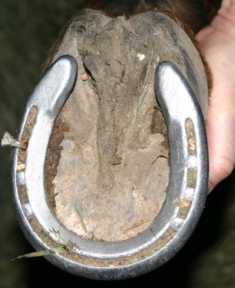 |
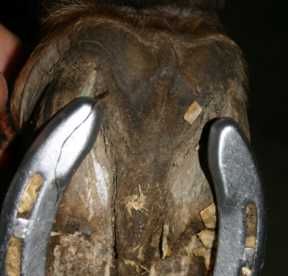 |
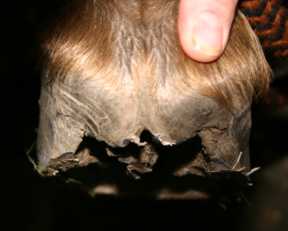 |
The Wall CrackAs I said above, we were concerned about how this crack would respond to being released from shoes. One of the first things that I realized after pulling her shoes was that the shoe offered very little support or protection to the edge of the crack or the rear of the foot. Even with the shoe in place, the ragged edge jutted out to the side where it could catch on a piece of rope or wire fence and allow that portion of the wall to be wrenched outward. When I began beveling the unshod foot, I thinned the wall so that if the edge did catch something, the weakened edge would bend or tear without causing much damage. The high bevel on this portion of the wall would also allow that wall section to wear faster so that the upward flare that is seen distorting the coronet band in the picture below. |
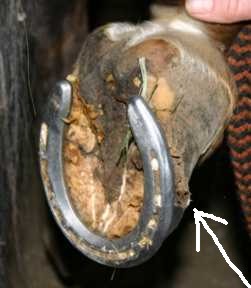 |
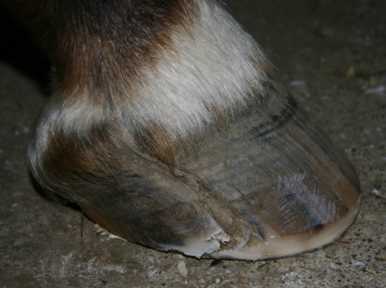 |
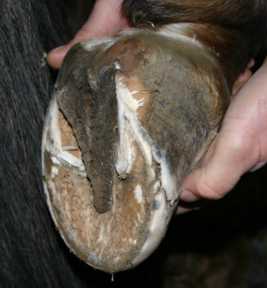 |
Wry FootI barely knew what a Wry Foot was 6 months ago! I understood that it involved a distorted and imbalanced shape, but wasn't sure what caused the imbalance or how to go about fixing it other than to apply a good, moderate trim. Now I understand that it is a shape that results from a horse favoring either an inner or outer wall in a way that causes the weighted wall to shorten or bow under the hoof while the other un weighted wall gets longer or flares outward. In Nippers case, Thrush made her frogs extremely uncomfortable so she walked on her inside walls so that her foot wouldn't expand and contract (known as "hoof mechanism") as it would if her walls were weighted evenly. My first "wry foot" was on a horse I didn't trim initially. Breeze http://www.healthyhoof.com/case_studies/Breeze/Breeze.html belongs to friend Karen Sullivan, who pulled her shoes on a whim and carefully started trimming her. My first real wry foot client horse is Samson whose web pages need updating. I had discovered that thrush was causing his wry foot shape when his vet X-rayed his foot. |
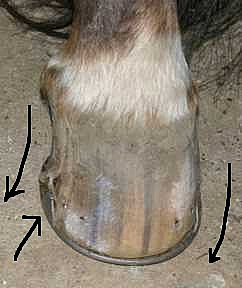 |
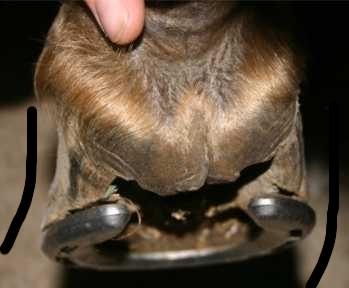 |
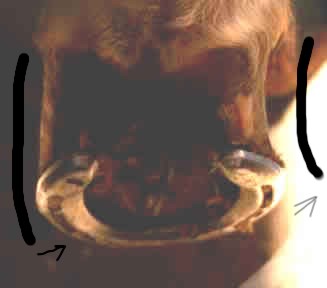 |
Serving the greater SF Bay Area & Northern California
Home | Contact Linda | Privacy | About Us
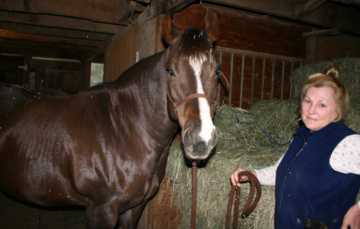 \\
\\